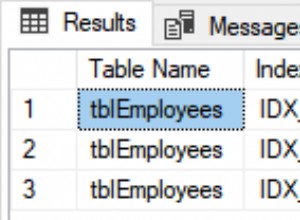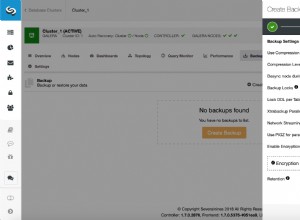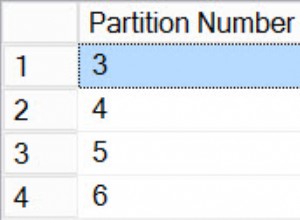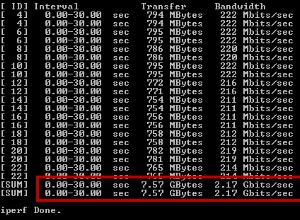Basado en los dos primeros requisitos, no hay nada malo con su disparador per se, pero puede simplificarlo enormemente:
CREATE OR REPLACE FUNCTION timelog() RETURNS trigger AS $BODY$
DECLARE
t_ix real;
BEGIN
-- First check if you need to change NEW at all
IF (NEW.time_type = 'Start') OR (NEW.time_type = 'Lap') THEN
-- Now perform the expensive lookup for either of 'Start' or 'Lap'
SELECT time_index INTO t_ix
FROM table_ebscb_spa_log04
WHERE fn_name = NEW.fn_name
AND (time_type = 'Start' OR time_type = 'Lap')
ORDER BY stmtserial DESC LIMIT 1;
IF NOT FOUND THEN
-- Nothing found, so NEW.time_index := 1
NEW.time_index := 1;
ELSIF NEW.time_type = 'Start' THEN
-- Start new index for fn_name, discard any fractional part, then increment
NEW.time_index := floor(t_ix) + 1;
ELSE
-- Continue the lap, increment NEW.time_index
NEW.time_index := t_ix + 0.1;
END IF;
END IF;
RETURN NEW;
END; $BODY$ LANGUAGE plpgsql;
Sin embargo, hay una manera mucho más fácil, y que también cumplirá con el tercer requisito sin ningún problema. En lugar de mirar los valores de "time_index", debe mirar el valor de "time", porque en eso se basa "time_index":
CREATE OR REPLACE FUNCTION timelog() RETURNS trigger AS $BODY$
DECLARE
t_ix real;
BEGIN
-- Find the most recent entry for the same "fn_name" as the new record
SELECT time_index INTO t_ix
FROM table_ebscb_spa_log04
WHERE fn_name = NEW.fn_name
ORDER BY time DESC LIMIT 1;
-- Nothing found, so NEW.time_index := 1
IF NOT FOUND THEN
NEW.time_index := 1;
RETURN NEW;
END IF;
-- Some record exists, so update "time_index" based on previous record
CASE NEW.time_type
WHEN 'Start' THEN
-- Start new index for fn_name, discard any fractional part, then increment
NEW.time_index := floor(t_ix) + 1;
WHEN 'Lap' THEN
-- Continue the lap, increment NEW.time_index
NEW.time_index := t_ix + 0.1;
ELSE
-- Break, find previous break or start, increment by 0.1
SELECT time_index + 0.1 INTO NEW.time_index
FROM table_ebscb_spa_log04
WHERE fn_name = NEW.fn_name
AND (time_type = 'Start' OR time_type = 'Break')
ORDER BY time DESC LIMIT 1;
END CASE;
RETURN NEW;
END; $BODY$ LANGUAGE plpgsql;
Esto implementa su lógica, pero tenga en cuenta que existen algunos peligros potenciales:
- ¿Qué sucede si inserta una 'Vuelta' o un 'Descanso' antes de un 'Inicio'?
- ¿Qué sucede si tiene más de 9 eventos "fn_name" después de un 'Inicio' (la parte fraccionaria "time_index" pasará al siguiente número entero)?
Por supuesto, podría olvidarse del campo "time_index" y el activador por completo y generarlo sobre la marcha en una vista, si su modelo de datos lo permite (lo mismo con "time_elapse").




